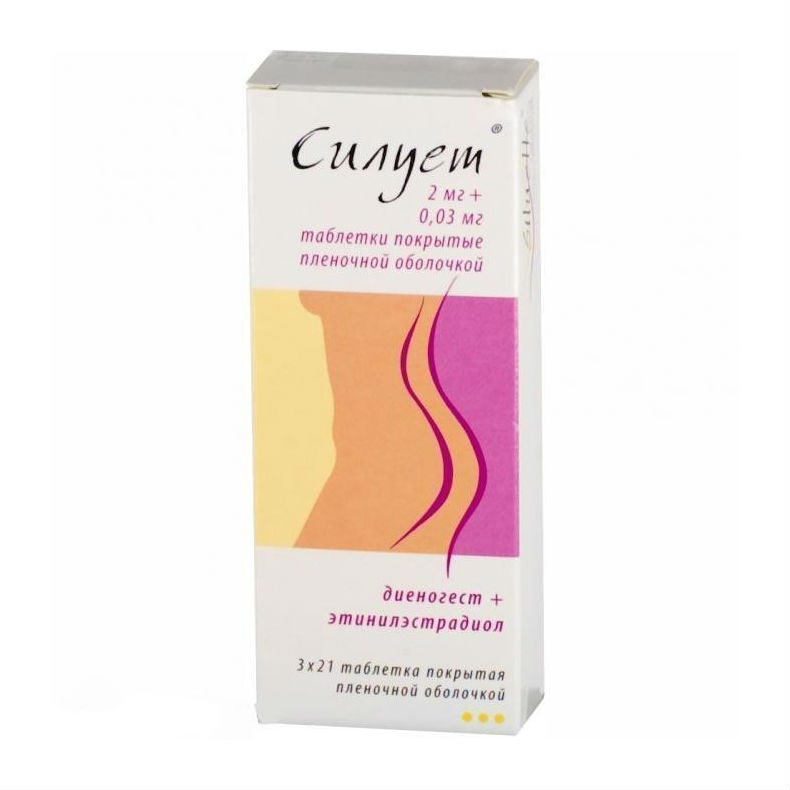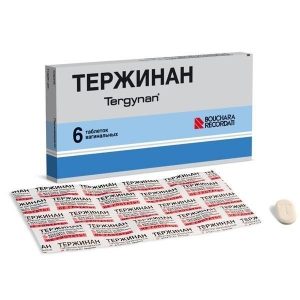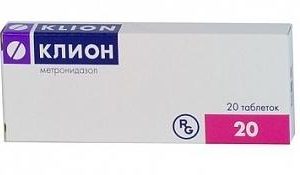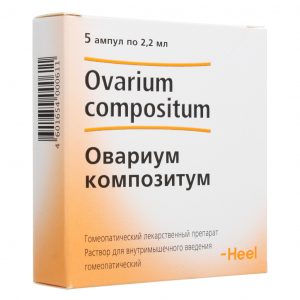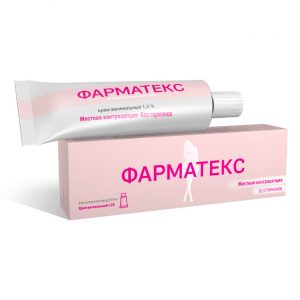Description
Latin name
SILUET
release form
tablets, film-coated
packaging 63 pcs
Pharmacological action
Strengthens – oral combination drug with antiandrogenic effect, contains ethinyl estradiol as estrogen and dienogest as progestogen. The contraceptive effect of the drug is due to various factors, the most important of which are inhibition of ovulation, increased viscosity of cervical mucus, changes in the motility of the fallopian tubes and the structure of the endometrium. The antiandrogenic effect of the combination of ethinyl estradiol and dienogest is based on a decrease in the concentration of androgens in plasma.
In repeated studies, it was shown that taking a combination of ethinyl estradiol and dienogest led to the alleviation of symptoms of mild to moderate acne and had a positive result in patients with seborrhea.
Dienogest is a derivative of norethisterone, which has 10-30 times lower affinity for in vitro progesterone receptors compared to other synthetic progesterones. Dienogest has no significant androgenic, mineralocorticoid, or glucocorticoid effects in vivo.
When isolated at a dose of 1 mg / day, dienogest inhibits ovulation.
Pharmacokinetics
Absorption. EE after oral administration is rapidly and completely absorbed in the small intestine. Cmax in plasma – 67 pg / ml, Tmax – 1.5-4 hours. During the initial passage through the liver, a significant part of EE is metabolized. Absolute bioavailability is approximately 44%.
distribution. EE is almost completely (about 98%), although non-specific, binds to albumin. EE increases the plasma concentration of sex hormone binding globulin (SHBG). The apparent Vd is 2.8 8.6 l / kg.
Metabolism. EE is conjugated in the intestinal mucosa and in the liver. The main pathway of EE metabolism is aromatic hydroxylation, but its metabolism also leads to the formation of a large number of hydroxylated and methylated derivatives in free, glucuronated and sulfated form. The clearance is approximately 2.3 7 ml / min / kg.
Withdrawal. A decrease in the concentration of EE in plasma occurs in 2 stages: the 1st stage – T1 / 2 is 1 hour, the 2nd – 10 20 hours. EE is not excreted unchanged. EE metabolites are excreted by the kidneys and liver in a ratio of 4: 6. T1 / 2 metabolites – about 24 hours.
Equilibrium concentration. Css is achieved during the 2nd half of the treatment cycle, and the concentration of EE in serum increases by 2 times.
dng
suction. After oral administration, it is rapidly and completely absorbed in the intestine. Cmax in plasma is 51 pg / ml, Tmax is 2.5 hours. Absolute bioavailability while taking with EE is 96%.
distribution. DNG binds to blood plasma albumin and does not bind to SHBG and globulin, which binds corticosteroid hormones. The fraction of free DNG in plasma is 10%, while 90% is non-specifically bound to albumin. The apparent Vd is 37 45 liters.
Metabolism. DNG is mainly metabolized by hydroxylation, an alternative way is glucuronidation. Its metabolites are inactive and quickly eliminated from plasma, therefore, it is not possible to detect metabolites in blood plasma in significant quantities, this does not apply to unchanged DNG. The total clearance after a single dose is 3.6 l / h.
Withdrawal. T1 / 2 of DNG is about 9 hours. A small amount in unchanged form is excreted by the kidneys. When administered, 86% is excreted within 6 days, of which 42% is excreted during the first 24 hours, mainly by the kidneys.
Equilibrium concentration. Css is reached within 4 days.
Indications
oral contraception
treatment for mild to moderate acne (acne) with local treatment failure in women who need contraception.
Contraindications
Combined oral contraceptives (CPC) should not be used if any of the conditions / diseases listed below are present in a woman. At the first occurrence of any of these conditions while taking a CPC, the drug should be stopped immediately:
hypersensitivity to the drug Siluet ® or any of its components
arterial and venous thromboembolic diseases at present or in history (e.g. deep vein thrombosis, pulmonary embolism)
thrombosis (arterial and venous) and thromboembolism currently or in the anamnesis, incl. thrombosis, deep vein thrombophlebitis, pulmonary embolism, myocardial infarction, ischemic or hemorrhagic cerebrovascular disorders of the
state preceding thrombosis (including transient ischemic attacks, angina pectoris, complicated valvular heart disease, atrial fibrillation, atrial fibrillation, atrial fibrillation with prolonged immobilization, extensive trauma)
pancreatitis with severe hypertriglyceridemia currently or in the history of
porphyria
yellow mucus, congenital hyperbilirubinemia (Gilbert syndrome, Dubin-Johnson and Rotor)
sickle cell anemia
multiple or severe risk factors for venous or arterial thrombosis history of risk factors for arterial thrombosis: – diabetes mellitus with vascular complications (angiopathy, retinopathy)
arterial hypertension severe dyslipoproteinemia.
congenital or acquired predisposition to arterial thrombosis, e.g. resistance to activated protein C, antithrombin III deficiency, protein C, S deficiency, hyperhomocysteinemia and the presence of antibodies to phospholipids (antibodies to cardiolipin, lupus anticoagulant)
liver disease (including history) to normalization of liver function tests
liver tumors (benign or malignant), including a history of
hormone-dependent malignant diseases of the genital organs or mammary glands, including history, or suspicion of
bleeding from the vagina of an unclear genesis of
migraine with local neurological symptoms, including a history of
epilepsy
lactase deficiency, lactose intolerance, glucose-galactose malabsorption
pregnancy
lactation period.
Caution: the presence of risk factors (varicose veins, heart disease, overweight, bleeding disorders) requires a more thorough study before starting CPC smoking at the age of under 35 years old (if a woman cannot quit smoking, another contraceptive method should be used, especially in the presence of other risk factors) the potential risk and expected benefit of using oral contraceptives should be carefully weighed in each individual case with the following diseases, conditions or risk factors: dyslipoproteinemia, diabetes mellitus without vascular complications, controlled arterial hypertension , fibrocystic mastopathy, uterine fibroids, endometriosis, multiple sclerosis, history of severe depression, impaired function check, contact lens intolerance, Crohn s disease, ulcerative colitis, superficial vein phlebitis, thromboembolism, acute cerebrovascular accident, myocardial infarction at a young age, chronic heart failure, breast cancer in relatives of the 1st degree of kinship, visual impairment (risk of retinal thrombosis), tetany, hypercalcemia, hypokalemia, bronchial asthma, hereditary angioedema, liver disease, idiopathic jaundice during previous pregnancy, herpes during pregnancy.
Use during pregnancy and lactation
Siluet ® is contraindicated during pregnancy.
If pregnancy occurs while taking Siluet ®, then the use of the drug should be stopped immediately.
The available information regarding the use of Siluet ® during pregnancy is too limited to draw conclusions about the negative effects of Siluet ® on pregnancy, fetal and newborn health.
Extensive epidemiological studies have not revealed an increased risk of developmental defects in children born to women who took sex hormones for contraception before pregnancy or, inadvertently, in early pregnancy.
The drug Siluet ® is contraindicated for use in breast-feeding women.
Composition of
1 tablet contains:
active ingredients:
ethinyl estradiol 0.03 mg,
dienogest 2 mg,
excipients:
lactose monohydrate – 47.66 mg
starch girosellum 10 mg 10, 10.4 – 10.4 65 mg
talc – 1.6 mg
potassium polacryline – 1.3 mg
magnesium stearate – 1.3 mg
film sheath:
Opadry II white 85F18422 (polyvinyl alcohol – 1.2 mg, titanium dioxide – 0.750 mg, macrogol 3350 – 0.606 mg, talc – 0, 444 mg) – 3 mg
Dosage and administration
Inside, 1 tablet / day, daily, at about the same time, if necessary, washed down with a small amount of liquid, in the order indicated on the blister pack, for the 21st day.
Reception of tablets from the next package begins 7 days after taking the last tablet from the previous package, during which withdrawal bleeding usually occurs. It usually begins on the 2nd 3rd day after taking the last pill and may not end at the beginning of taking the pill from the next package.
Switching from taking progesterone-only tablets can be done any day.
If hormonal contraception has not been used before (for a month)
Taking Siluet ® should be started on the 1st day of the menstrual cycle (i.e. on the 1st day of menstruation).
In the event of a switch from PDA
It is preferable to start taking Siluet ® the next day after the usual break in intake or the day after the last dose of the last tablet from the current package of oral contraceptives.
Injection Form,
implants The transition from the use of implants is performed on the day the implant is removed during the transition from the injection form – the day after the last injection.
After an abortion in the first trimester of pregnancy
You can start taking it immediately, in this case there is no need to use additional contraception.
After childbirth or abortion in the second trimester
It is recommended to start taking the drug on the 21 28th day after childbirth or abortion in the second trimester of pregnancy. If you start taking the drug later, you should warn the woman about the need to use additional barrier methods (condom) during the first 7 days. However, if sexual intercourse has already occurred, before starting CPC, it is necessary to exclude pregnancy or wait for the 1st menstruation.
Taking missed
tablets If the delay in taking the drug was less than 12 hours, contraceptive protection does not decrease. A woman should take the drug as soon as possible, taking the next pill at the usual time. If the delay in taking the pill was more than 12 hours, contraceptive protection may be reduced. In this case, one can be guided by the following two basic rules:
– the drug should never be interrupted for more than 7 days
– it takes 7 days of continuous pill administration to achieve adequate suppression of hypothalamic-pituitary-ovarian regulation.
Accordingly, the following tips can be given if the delay in taking the pills was more than 12 hours.
1st week. A woman should take the last missed pill as soon as possible, even if this means taking 2 tablets. at the same time. The next tablet is taken at the usual time. Additionally, a barrier method of contraception (such as a condom) should be used over the next 7 days. If there was sexual intercourse within a week before skipping a pill, the probability of pregnancy should be taken into account. The more tablets missed and the closer this pass to the 7-day break in taking the tablets, the higher the risk of pregnancy.
2nd week A woman should take the last missed pill as soon as possible, even if this means taking 2 tablets. at the same time. The next tablet is taken at the usual time. In the event that within 7 days before the pass the woman took the pills correctly, there is no need for additional contraception. However, if she missed taking more than the 1st table., she should use additional methods of contraception (condom) for 7 days.
3rd week The risk of a decrease in reliability is inevitable due to the upcoming 7-day break in admission. However, by adjusting the schedule for taking the pills, weakening of contraceptive protection can be prevented. If you comply with one of the 2 proposed methods, there is no need to use additional methods of contraception if a woman correctly took the pill within 7 days before the pass. Otherwise, she must follow 1 of these 2 methods, and also use additional methods of contraception for the next 7 days.
1. A woman should take the last missed pill as soon as possible, even if it means taking 2 tablets. at the same time. The next tablet is taken at the usual time. Reception of tablets from the next blister pack should be started immediately after the reception of the previous one, i.e. there should not be a usual break between receptions. Most likely, the woman will not have withdrawal bleeding until the end of the 2nd package, but she may have spotting spotting or breakthrough uterine bleeding on the days of taking the tablets.
2. It is possible to stop taking tablets from the current blister pack. Then there should be a 7-day break in taking the tablets, including the days of the missed tablets, and then you need to start taking the tablets from the new package. If a woman missed taking the pill and then in the 1st normal interval between doses of the drug she does not have withdrawal bleeding, pregnancy must be excluded.
If a woman has vomited within 4 hours after taking the
tablet, absorption may not be complete and additional contraceptive measures should be taken. In these cases, take a new (replacement) tablet as soon as possible. If possible, a new tablet should be taken within 12 hours after the usual time of administration. If more than 12 hours have passed, you should be guided by the recommendations for skipping tablets in the section for taking missed tablets.
If a woman does not want to change the normal regimen of taking pills, she should use an extra tablet from another blister pack.
How to delay withdrawal bleeding
In order to delay the onset of menstrual bleeding, a woman should continue to take Siluet ® from a new package immediately after all the pills from the previous one have been taken, without a break in admission. Against the background of taking the drug from the 2nd package, a woman may have spotting or breakthrough uterine bleeding. Resume taking Siluet ® from a new pack should be after a normal 7-day break.
In order to move the day the menstrual bleeding begins to another day of the week, a woman can be recommended to shorten the next break in taking the pill for as many days as she wants. The shorter the interval, the higher the risk that there will be no withdrawal bleeding and in the future, during the next pack, spotting and breakthrough bleeding will appear (as well as in the case when she would like to delay the onset of menstrual bleeding).
Drug Interaction
Interactions related to the activation of microsomal enzymes between oral contraceptives and other drugs may lead to breakthrough bleeding and / or decreased contraceptive efficacy. These effects have been shown for hydantoin, phenobarbital, primidone, carbamazepine and rifampicin.
Such effects are also possible for rifabutin, efavirenz, nevirapine, oxcarbazepine, topiramate, felbamate, ritonavir, griseofulvin and herbal drugs – Hypericum perforatum. The mechanism of these interactions is based on the ability of these drugs to activate microsomal liver enzymes.
According to clinical observations, concomitant use with some antibiotics (such as ampicillin and tetracycline) may reduce the effectiveness of contraception, the cause of this phenomenon is unknown.
Women taking the above drugs for a short period of time (up to a week) should temporarily use barrier methods of contraception in addition to the PDA, for example, during the period of taking one of these drugs and 7 days after.
Women taking rifampicin should use barrier methods during the time of taking rifampicin and 28 days after the end. If the concomitant medication is taken at the end of taking the tablets from the pack, the next pack should be started immediately, without the usual interval.
With long-term concomitant use, With the ability to activate liver enzymes, the doctor may consider the need to increase doses of hormonal contraceptives. If this approach leads to undesirable effects (such as irregular bleeding) or decreased efficacy, then another method of contraception should be used.
Based on in vitro studies, it has been shown that DNG does not inhibit cytochrome P450 when using conventional concentrations, so no interaction of this nature is expected.
Interactions of drugs that increase the clearance of sex hormones can lead to breakthrough uterine bleeding and reduce the contraceptive effectiveness of the drug.
Overdose
Acute toxicity with oral administration of a combined preparation of EE and DNG with an overdose is low.
Symptoms: nausea, vomiting and bleeding / bleeding from the vagina may occur.
Treatment: symptomatic, no need for special therapy.
Storage conditions
In the dark place at a temperature of no higher than 25 ° C.
Expiration
2 years.
Deystvuyuschee substances
ethinyl estradiol, dienogest
Dispensing conditions from
pharmacies Prescription
Dosage form
Dosage form
tablets
